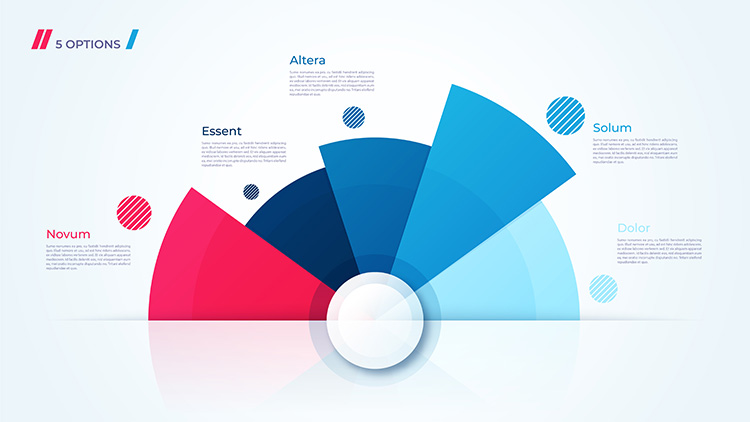AI & ML DevelopmentAbout this Services
Improve Machine Learning algorithms by studying underfitting, overfitting, training, validation, n-fold cross validation, testing, and how hyperparameters could improve performance. Perform linear and logistic regressions in Python.
1. Testing Solutions
1.1 Functional Testing
- Ensures that the application functions as expected according to the requirements and specifications.
1.2 Performance Testing
- Evaluates the speed, responsiveness, and stability of an application under various loads.
1.3 Security Testing
- Identifies vulnerabilities and ensures the protection of data against unauthorized access.
1.4 Automation Testing
- Uses automated scripts and tools to perform repetitive tasks to ensure accuracy and save time.
1.5 Regression Testing
- Ensures that recent code changes have not adversely affected the existing functionality.
1.6 Compatibility Testing
- Verifies that the application works as expected across different browsers, devices, operating systems, and network environments.
1.7 Usability Testing
- Evaluates the ease of use and user-friendliness of the application for end-users.
1.8 Mobile Testing
- Focuses on testing mobile applications across various devices, OS versions, and networks.
1.9 API Testing
- Ensures that the APIs used in an application work seamlessly and deliver accurate results.
1.10 Cloud Testing
- Verifies cloud-based applications for scalability, security, and performance across different cloud environments.
2. Verification & Validation Services
2.1 Requirements Validation
- Ensures that all project requirements are clearly defined, correct, and meet customer expectations.
2.2 Design Verification
- Confirms that the design phase meets the requirements and can support functionality, scalability, and security.
2.3 Code Review & Static Analysis
- Systematic examination of source code to ensure it follows coding standards and is free of errors or vulnerabilities.
2.4 Functional Validation
- Testing to ensure that the system functions according to the specified requirements.
2.5 User Acceptance Testing (UAT)
- Final validation to ensure the product is ready for release, conducted by end-users or stakeholders.
2.6 Hardware-in-the-Loop (HIL) Testing
- Testing real-time embedded systems using simulated environments to verify correct system behavior.
3. Test Life Cycle
3.1 Requirement Analysis
- Understand the testing requirements and define test objectives and scope.
3.2 Test Planning
- Create a detailed test plan outlining test strategy, resources, timelines, and deliverables.
3.3 Test Design
- Design test cases and test scripts based on functional and non-functional requirements.
3.4 Test Environment Setup
- Set up the required hardware, software, networks, and tools needed for testing.
3.5 Test Execution
- Execute test cases, log defects, and track progress through various cycles of testing.
3.6 Test Reporting
- Generate detailed reports on test results, defects, and system performance to inform stakeholders.
3.7 Test Closure
- After validation, the test cycle is closed, and test metrics are analyzed for further improvements.
4. Different Types of Testing
4.1 Manual Testing
- Testing carried out by human testers without the use of automation tools to find defects in software functionality.
4.2 Automation Testing
- Use of automated tools and scripts to perform repetitive tasks like regression and load testing.
4.3 Unit Testing
- Testing individual components or units of a software application to verify that each part functions correctly.
4.4 Integration Testing
- Testing how different modules or components of the system interact with each other.
4.5 System Testing
- End-to-end testing of the complete application, including all integrated modules, to ensure it meets the overall system requirements.
4.6 Acceptance Testing
- Ensures that the application meets the required standards and functionality for delivery.
4.7 Load Testing
- Evaluates the application's behavior under expected or peak load conditions.
4.8 Stress Testing
- Tests the system's robustness and ability to handle extreme conditions beyond normal operational capacity.
4.9 Penetration Testing
- Simulates cyber-attacks to identify vulnerabilities and ensure that the application is secure from potential threats.
5. Domain-Based Testing
5.1 IoT Testing
- Validation of device functionality, network connectivity, data integrity, and performance across various IoT platforms and hardware.
5.2 Embedded Testing
- Verification of software and hardware integration in embedded systems, including real-time performance and memory efficiency.
5.3 Semiconductor Testing
- Focuses on validating the functionality, performance, and reliability of semiconductor chips and ICs used in various devices.
5.4 Industry-Specific Testing
- Custom testing solutions for industries like automotive, aerospace, healthcare, manufacturing, and consumer electronics.
5.5 Web Application Testing
- Verifies that web applications perform optimally across browsers, devices, and environments.
5.6 Cloud Testing
- Testing cloud-hosted applications for scalability, performance, data integrity, and security in different cloud environments.
5.7 Android & iOS Application Testing
- Testing mobile applications for functionality, compatibility, and performance on Android and iOS platforms.
5.8 Security Testing
- Includes vulnerability scanning, penetration testing, risk assessment, and authentication testing to secure systems and data.
6. Automation Testing
6.1 Selenium
- A widely used open-source tool for automating tests on web applications across different browsers and platforms.
6.2 JUnit
- A unit testing framework for Java applications, facilitating regression testing and validation of software functionality.
6.3 TestNG
- A testing framework for Java that supports testing annotations, parallel execution, and integration with automation tools like Selenium.
6.4 Appium
- An open-source tool for automating native, mobile web, and hybrid applications on Android and iOS platforms.
6.5 Cucumber
- A tool for Behavior-Driven Development (BDD) that allows writing tests in a human-readable format for better collaboration.
6.6 Katalon Studio
- A powerful test automation solution for web, mobile, API, and desktop applications, with easy setup and reporting capabilities.
7. Testing Techniques
7.1 Black Box Testing
- Testing without knowledge of the internal code structure, focusing on inputs and expected outputs.
7.2 White Box Testing
- Testing based on knowledge of the internal logic of the application, focusing on code coverage and internal structures.
7.3 Grey Box Testing
- Combines both black-box and white-box testing approaches, testing the application with limited knowledge of the internal workings.
7.4 Boundary Value Analysis
- Focuses on testing the values at the boundaries between partitions to uncover edge cases and potential defects.
7.5 Equivalence Partitioning
- Divides input data into equivalent partitions and tests one value from each partition, reducing the number of test cases.
7.6 Exploratory Testing
- Unscripted, informal testing performed by testers to explore the application and find defects through experience and intuition.
8. Testing Tools and Software
8.1 Selenium
- A tool for automating web browsers, supporting multiple programming languages and platforms.
8.2 JMeter
- A performance and load testing tool for web applications and other services, used for measuring system behavior under heavy load.
8.3 Postman
- A tool used for API testing to ensure that web services work as expected by validating response data and performance.
8.4 Jenkins
- A continuous integration tool used to automate testing processes and ensure that code changes are validated through automated pipelines.
8.5 LoadRunner
- A tool for testing performance, enabling testers to simulate user load and identify bottlenecks in the system.
8.6 QTest
- A test management tool that supports various types of testing, including manual, automation, and exploratory testing, with comprehensive reporting.
8.7 SoapUI
- A tool for functional and performance testing of web services (REST and SOAP APIs), providing a comprehensive testing platform.
It is a long established fact that a reader will be distracted by the readable content of a page when looking at its layout. The point of using Lorem Ipsum is that it has a more-or-less normal distribution of letters, as opposed to using ‘Content here, content here’, making it look like readable English. Latin words, combined with a handful of model sentence structures, to generate Lorem Ipsum which looks reasonable.
Application Areas
Technologies That We Use
- JavaScript
- Python
- Java
- C/CPP
- PHP
- Swift
- C# (C- Sharp)
- Ruby
- SQL


